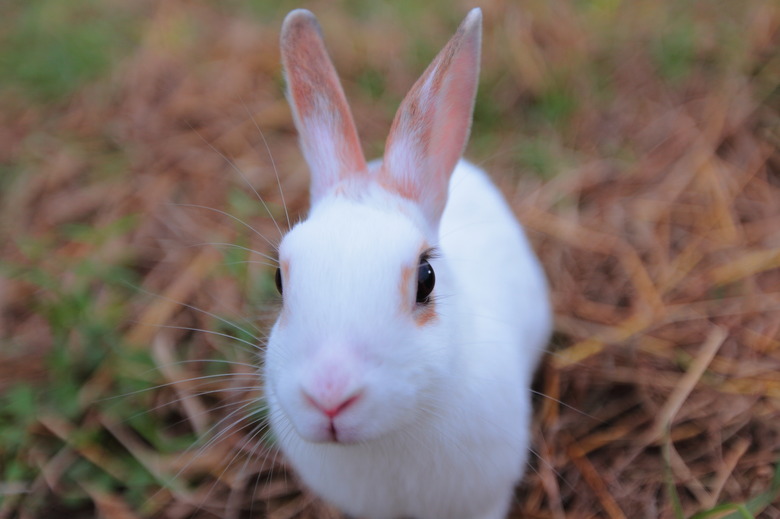Common Eye Colors For Rabbits
Brown is the most common rabbit eye color, but you may encounter a number of other shades in pet rabbits. Some of these, including brown, amber, blue, and blue-gray, are natural colors, while others are recessive traits or the result of genetic or medical disorders.
Brown and amber eyes
Brown and amber eyes
Most pet rabbits have brown eyes. This is because the gene for brown eyes is dominant. You may see a number of different shades of brown, from light to dark. Another common rabbit eye color is amber, but you will rarely see this in pet rabbits. Amber-colored eyes occur primarily in wild rabbits and hares. These rabbits have both the gene for brown eyes and the gene for yellow eyes, causing the lighter shade.
Shades of blue
Shades of blue
The next most common eye colors in rabbits are blue and blue-gray. Two melanin pigments determine the color of a rabbit's eyes: eumelanin and pheomelanin. Larger eumelanin particles lead to dark brown eyes, while larger pheomelanin particles lead to light brown eyes. However, when the particles of both pigments are small in size, the rabbit will have blue eyes.
Blue-gray eyes are less common. This eye color occurs when the rabbit has small eumelanin particles and large pheomelanin particles. It is possible for these particles to get larger as the rabbit ages. This means that some rabbits may develop darker-colored eyes as they age.
Pink and marbled eye color
Pink and marbled eye color
Pink eyes are a recessive trait. These rabbits have brown or blue eyes, but the natural shade is diluted, causing the iris to appear pink in color. Rabbits must inherit the recessive gene that causes color dilution from both parents. Marble eye color is incredibly rare. Rabbits may have a combination of brown, blue, or blue-gray in the iris, and the marbling pattern is not symmetrical in both eyes. It is caused by sectoral heterochromia, a genetic disorder.
Red as a rabbit eye color
Red as a rabbit eye color
Albino rabbits have ruby-red eyes. Albinism is a recessive condition from which wild rabbits rarely suffer. Rabbits with this condition do not create melanin, which means that the rabbit does not have pigmentation in the eyes or in the fur. Since the iris of the eye does not have pigment, the red from the blood vessels in the eye is visible. Don't mistake this for the red eyes sometimes seen in photos. This type of red is caused by the camera flash.
All red-eyed, albino rabbits are white. However, not all white rabbits are albinos. While the white coloring may not be as common, you can find healthy white rabbits with natural-color eyes.
While some breeders deliberately breed white rabbits, there are some things to consider before you get an albino rabbit. The lack of eye pigmentation means that their eyes are extremely sensitive to the sun, so you will need to keep your rabbit out of bright light. Vision problems are not uncommon, and these rabbits may have problems with following objects and depth perception.
White eye color
White eye color
You may also encounter rabbits with white eyes. This is not a natural eye color but rather the result of cataracts in the eye. This is a medical condition that is more common in older rabbits and can not only be painful but may also cause blindness. Without treatment, the affected eye may need to be removed.
